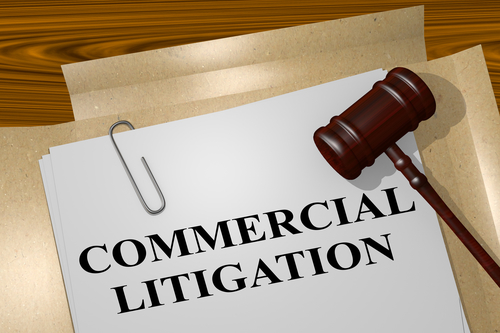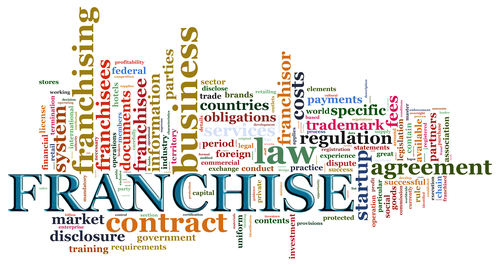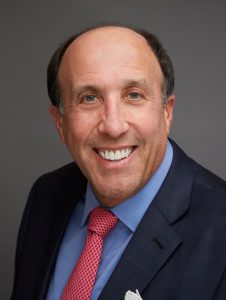CATEGORY: Business Litigation

When pleading a claim of misappropriation of trade secrets, plaintiffs must walk a fine line
between providing sufficient specificity of the alleged trade secrets, on the one hand, and
preventing unnecessary and inadvertent public disclosure, on the other hand. In a trade secret
misappropriation action under common law or the Defend Trade Secrets Act of 2016,¹ the
plaintiff must define the allegedly misappropriated matter with reasonable specificity or
particularity.² A plaintiff’s allegations must be much more than general assertions. They must be
“sufficiently specific to allow a determination by the court.”³ Some states have codified this
requirement, including California⁴ and Massachusetts.⁵
In recent years, a number of New York federal court judges have emphasized the need for
plaintiffs to plead trade secret cases with particularity. Perhaps the earliest New York federal
court cases to affirm this specificity requirement was the 2008 case of Sit-Up Ltd. v.
IAC/InterActive Corp., which held that specificity is required at the time of disclosure and
throughout the litigation. In Sit-Up Ltd., Judge Denise Cote held that the plaintiff failed to define
a number of its allegedly misappropriated trade secrets with sufficient particularity.⁶ In her
decision, Judge Cote stated that “the Second Circuit has not squarely articulated a specificity requirement, [but] there is no reason to believe that it would permit a party to advance a trade secret claim in vague and ambiguous terms.”⁷ Simply put, the court held, this standard of specificity is required because it enables a defendant to adequately defend himself against claims of trade secret misappropriation.⁸
In the 2014 case of Big Vision Private Ltd. v. E.I. DuPont De Nemours & Co., Judge Katherine
Polk Failla of the Southern District concurred with Judge Cote’s discussion of Second Circuit
law on the pleading requirement and added that “each Circuit Court of Appeals to have opined
on this issue has required a comparable degree of specificity, as have numerous district courts
across the country.”⁹ Judge Failla unambiguously adopted a particularity requirement¹⁰ and ruled
that the plaintiff had failed to identify its alleged trade secrets with particularity.¹¹
Citing Sit-Up Ltd. in 2021, Judge Lewis J. Liman affirmed in Town & Country Linen Corp. v.
Ingenious Designs LLC that New York state common law requires a plaintiff to “describe the
alleged trade secret with adequate specificity to inform the defendants what it is alleged to have
appropriated.” Specificity is required both “at the moment of divulging” an alleged secret and
“before the court.”¹² The former requirement ensures that the defendant adequately understands the alleged trade secret enough to prevent misappropriation, while the latter requirement is intended to allow the defendant to defend against misappropriation claims.
In the last few years, several other Southern District judges have affirmed the requirement that
plaintiffs plead their trade secret misappropriation claims with specificity. The cases of Elsevier
Inc. v. Doctor Evidence, LLC¹³ and Zirvi v. Flatley¹⁴ are examples of such rulings.
In 2018, Southern District Judge Katherine Forest dismissed the Elsevier claimant’s pleading
because it failed to include specific allegations “supporting the various factors that define the
‘contours’ of a trade secret[.]”¹⁵ Judge Forest acknowledged that “[t]rade secrets are a narrow
category of confidential information; to survive a motion to dismiss, a party alleging that it owns
a trade secret must put forth specific allegations as to the information owned and its [independent
economic] value.”¹⁶ General allegations regarding confidential information and processes, the
court held, do not constitute a plausible trade secrets claim, as the proper standard for according
the status of “trade secrets” is far greater than the standard for “confidential information.”¹⁷
Two years later, the Clerk of the Southern District issued a Summary Order in Zirvi in which the
Court rejected the plaintiffs’ allegations failed because they failed to put forth specific
allegations as to the information owned or its value.¹⁸ The Court held that the allegations were too broad and vague, and found it “difficult to see how negative trade secrets consisting of unsuccessful efforts to develop trade secrets and experimental dead ends, can have independent
economic value when the end result of the process, the positive trade secrets, have in fact been uncovered.¹⁹ The Zirvi decision makes clear that plaintiffs are required to “plead their trade secrets with sufficient specificity to inform the defendants of what they are alleged to have
misappropriated.”²⁰
In 2022 and 2023, this heightened specificity requirement was echoed in several district court
cases within the Second Circuit, resulting in the dismissal of trade secret claims.²¹
The Eastern District has similarly abided by the standard requiring particularized pleading of
trade secrets. In Core SWX, LLC v. Vitec Grp. US Holdings, Inc., the court held that the
defendants’ counterclaims did not adequately identify the alleged trade secrets. As Judge James
M. Wicks explained, “district courts in this circuit routinely require that plaintiffs plead their
trade secrets with sufficient specificity to inform the defendants of what they are alleged to have
misappropriated.”²²
The heightened pleading requirement in trade secret misappropriation cases affirmed in recent
years in New York federal courts demonstrates the need, which has always existed albeit not always heeded, for counsel to thoroughly investigate a client’s purported trade secrets at issue before filing a lawsuit. These cases also highlight the importance of defendants considering whether to file a motion to dismiss on the grounds that the information alleged in a complaint cannot constitute trade secrets.
1 See “Defend Trade Secrets Act of 2016: A Five Year Overview,” www.richardfriedmanlaw.com.
2 To grant a plaintiff’s motion for a preliminary injunction, a court must “find that it clearly appears from specific facts” that the applicant is likely to succeed in demonstrating that the information is a trade secret, and the person against whom seizure would be ordered misappropriated the trade secret of the applicant by improper means or conspired to use improper means to misappropriate the trade secret of the applicant. 18 USCA § 1836 IV. See also 127 AM. JUR. TRIALS 283 § 16 (last updated August 2022) (providing a Cumulative Supplement of relevant cases). 3 AM. JUR. TRIALS § 16 (quoting Healthcare Services of the Ozarks, Inc. v. Copeland, 198 S.W.3d 604, 611 (Mo. 2006)).
4 Cal. Civ. Proc. Code § 2019.210 (requiring plaintiffs to “identify the trade secret with reasonable particularity” before commencing discovery).
5 Mass. Gen. Laws ch. 93, § 42D (“in alleging trade secrets misappropriation a party must state with reasonable particularity the circumstances thereof, including the nature of the trade secrets and the basis for their protection.”
6 Sit-Up Ltd. v. IAC/InterActive Corp., 2008 U.S. Dist. LEXIS 12017, at *29 (S.D.NY. 2008).
7 Id. at 11 (citing Heyman v. AR. Winarick, Inc., 325 F.2d 584, 590 (2d Cir. 1963) (affirming the district court’s factual finding that the plaintiff’s disclosure was “so vague and indefinite as not to be entitled to protection under the law of trade secrets.”).
8 Id.
9 Big Vision Private Ltd. v. E.I. DuPont De Nemours & Co., 1 F.Supp.3d 224, 258 (S.D.N.Y. 2014) (citations omitted).
10 Id. at 259 (“Several district courts within this Circuit have adopted this particularity requirement, and this Court now joins them.”) (citations omitted).
11 Id. at 266 (citations omitted).
12 Town & Country Linen Corp. v. Ingenious Designs LLC, 556 F. Supp. 3d 222, 270 (S.D.N.Y. 2021) (citing Sit-Up Ltd., 2008 U.S. Dist. LEXIS 12017, at *11) (alteration in original).
13 Elsevier Inc. v. Dr. Evidence, LLC, 2018 U.S. Dist. LEXIS 10730, at *10 (S.D.N.Y. 2018).
14 Zirvi v. Flatley, 433 F.Supp.3d 448, 465 (S.D.N.Y. 2020).
15 Elsevier Inc., 2018 U.S. Dist. LEXIS 10730, at *10 (“contours” of a trade secret include: “the information’s value, the extent to which it is known by those within and outside the business, the amount of effort or money spent to develop the information, and the ease with which the information could be acquired or developed by outsiders.”).
16 Id. at 3 (citation omitted) (alteration in original); see Zirvi, 433 F.Supp.3d at 465 (citation omitted).
17 Id. at 5. There is no one-size-fits all definition to a trade secret, so New York courts typically consider several factors to determine whether the information at issue qualifies. Id. at 3.
18 Zirvi, 433 F.Supp.3d at 465.
19 Id. at 465 (alteration in original).
20 Id. (citation omitted).
21 AA Med. P.C. v. Almansoori, 2023 U.S. Dist. LEXIS 207487, *26 (E.D.N.Y. 2023); UrthTech LLC v. GOJO Indus., 2023 U.S. Dist. LEXIS 125555 (S.D.N.Y. 2023); Beijing Neu Cloud Oriental Sys. Tech. Co. v. IBM, 2022 U.S. Dist. LEXIS 54348, *10 (S.D.N.Y. 2022); Altman Stage Light, Inc. v. Smith, 2022 U.S. Dist. LEXIS 22699 at *11 (S.D.N.Y. 2022) (examples of cases where plaintiffs’ claims were dismissed because of failure to meet this standard).
22 Core SWX, LLC v. Vitec Grp. US Holdings, Inc., 2022 U.S. Dist. LEXIS 125198, at *13 (E.D.N.Y. 2022) (citations omitted).

Can an employee be found criminally or civilly liable under the Computer Fraud and Abuse Act (CFAA”) for accessing digital information to which she or he had authorization when done for an improper purpose? The answer prior to the June 2021 decision by the U.S. Supreme Court in Van Buren v. United States, 141 S. Ct. 1648 (2021), was unclear and varied between jurisdictions.
The Computer Fraud and Abuse Act:
Under the Computer Fraud and Abuse Act, civil and criminal liability may be pursued against any person who knowingly accesses a computer without authorization or “exceeds authorized access” to obtain and or misuse information from the computer.1 The Act defines “exceeds authorized access” as “access[ing] a computer with authorization to obtain or alter information in the computer that the accessor is not entitled so to obtain or alter…”2 The statute does not contain a definition of “with authorization” or “without authorization,” which contributed to inconsistent lower federal court decisions.
Van Buren’s Misuse:
Nathan Van Buren served as a sergeant in the Cumming, Georgia Police Department. His position afforded him authorized access to the Georgia Crime Information Center, which included the authority to scan license plates from his patrol car. Andrew Albo was known by the local police to patronize prostitutes and then accuse them of stealing money from him. Albo recorded a conversation in which Van Buren asked him for a $15,000 loan and provided the recording to the local sherrif’s office, alleging that Van Buren was “shaking him down.” After being contacted by the sheriff’s office, the FBI set up a sting operation in which Albo asked Van Burn to run the license plate of a stripper he was supposedly interested in soliciting for sexual services to see if she was an undercover police officer before he would provide Van Buren with the full amount of the loan. Van Buren complied with the request and was arrested. A jury convicted him under the CFAA and sentenced him to eighteen months in prison. Van Buren appealed to the Eleventh Circuit, arguing that the prosecution’s analysis of the CFAA, that an employee with authorized access to a database who used it for purposes inconsistent with the employer’s interest violated the CFAA, was flawed. In upholding the conviction, the Eleventh Circuit chose not to apply a narrower interpretation of “with authorization” that certain other circuit courts had used.
Supreme Court Decision:
In its Decision reversing the Eleventh Circuit, the Supreme Court held that the CFAA does not cover “those who… have improper motives for obtaining information that is otherwise available to them.”3 Specifically, Justice Amy Coney Barrett, writing for a majority of six, with Chief Justice Roberts and Justices Thomas and Alito in dissent, wrote that a person violates the “exceeds authorized access” language of the CFAA only when they access information that that is off-limits to them in a database or computer network to which they otherwise have access. Justice Barrett pointed out that Van Buren, on the other hand, obtained information to which he was entitled and held that the fact that he did so for an improper purpose did not violate the CFAA. A contrary holding that every violation of a computer-use policy violated the CFAA. Justice Barrett wrote, would lead to the conclusion that millions of otherwise law-abiding citizens could be subjected to criminal sanctions under the CFAA. Under the Court’s analysis, prosecutors and company plaintiffs would have to prove that an employee misused computers, servers, or software she or he did not have the authority to access, or whose access had expired, in order to convict or impose civil liability under the CFAA. Accessing data for a nefarious purpose, the Court held, is not alone sufficient to justify criminal or civil liability under the CFAA.
Justice Barrett wrote that Van Buren’s use of the license plate scanner in the manner he was permitted, “regardless of whether he [scanned] the information for a prohibited purpose,” did not violate the CFAA.4 The Government interpretation and Eleventh Circuit ruling would “attach criminal penalties to a breathtaking amount of commonplace computer activity…”5 adding “extra icing on a cake already frosted,” according to the majority.6
The decision in Van Buren means that the CFAA criminalizes computer hacking but does not extend to criminalize violations of “purpose-based limits contained in contracts and workplace policies.”7 A person with access to a set of files who uses them in a way prohibited by her or his employment contract would not violate the CFAA by doing so. An infraction would occur only if that person hacked into files he or she was unauthorized to use. Of course, such actions, though not criminal under the CFAA, would almost certainly violate company policies or breach an employment agreement.
Next Steps for Employers:
In view of Van Buren, employers concerned with protecting sensitive information on company servers should implement multiple measures to secure it such as:
- Reassessing company security policies;
- Investing in encryption software or renewing existing encryption services;
- Requiring that existing employees and new hires sign confidentiality agreements; and
- Limiting access to protected files to individuals responsible for their contents.
1 18 U.S.C § 1030(a)(2).
2 Id.
3 Van Buren v. United States, 141 S. Ct. 1648 at 1652.
4 Van Buren, 141 S. Ct. at 1654.
5 Id. at 1661.
6 Id. quoting Yates v. United States, 135 S. Ct. 1074 (2015)
7 Id. at 1662.

Richard B. Friedman
Richard Friedman PLLC
200 Park Avenue Suite 1700
New York, NY 10166
TEL: 212-600-9539
[email protected]
www.richardfriedmanlaw.com
www.richardfriedmanlaw.com/blog
Connect with me on Linkedin

Since its inception in 1995, the Commercial Division of the Supreme Court of the State of New York has expanded to become the preeminent forum for resolution of complex commercial disputes in New York State due to the expertise of its judges and rules designed to promote efficiency. Among other things, the Commercial Division is noted for its Commercial Division Advisory Council, which is composed of experienced commercial litigators, judges, and in-house counsel who have been judicially appointed. The Council provides advice concerning: (i) issues of interest to commercial litigators; (ii) the changing landscape of commercial litigation in New York; (iii) amended rules of practice; and (iv) other important issues relating to practice in the Commercial Division. The New York County Commercial Division also has an Advisory Committee comprised of judicially appointed private practitioners who meet periodically with the judges of that court.
The Commercial Division employs its own statewide rules, located at 22 N.Y.C.R.R. § 202.70, which significantly augment New York’s Civil Practice Law and Rules (“CPLR”). These rules are tailored to promote efficiency and fairness to commercial litigants and provide them advantages over litigating in the regular Civil Branch. Among these advantageous rules are:
- Proportionality
- The preamble and guidelines of the Commercial Division Statewide Rules state that principles of proportionality apply to discovery.
- Optional Accelerated Adjudication
- Rule 9 of the Commercial Division Statewide rules permits parties in all actions other than class action to accelerate litigation, with the intention of ensuring that all such actions are trial-ready within nine months from the date of filing.
- Depositions
- There is a presumptive limit of ten depositions per side with each lasting presumptively no more than seven hours.
- Depositions of Entities
- Pursuant to Rule 11-f, parties may subpoena and examine at deposition entities by questioning an individual designated by the entity to be examined.
- Limits on Interrogatories
- Pursuant to Rule 11-a, the Commercial Division generally limits the number of interrogatories to 25, including subparts, and limits interrogatories during discovery to:
- names of witnesses with material knowledge or information;
- computation of each category of damage alleged; and
- the existence, custodian, location, and general description of material and necessary documents.
- Pursuant to Rule 11-a, the Commercial Division generally limits the number of interrogatories to 25, including subparts, and limits interrogatories during discovery to:
- Streamlined Privilege Logs
- Rule 11-b states that the Commercial Division prefers that parties use categorical designations to reduce the time and costs associated with preparing privilege logs. Accordingly, the Commercial Division may, upon application by the burdened party, require the party who insists on document-by-document privilege log listings to pay costs and attorney’s fees associated with their creation.
- No Boilerplate Objections to Document Requests
- Pursuant to Rule 11-e, the Commercial Division requires parties to either:
- state that the production will be made as requested; or
- state with reasonable particularity the grounds for any objection to production.
- Accordingly, parties can no longer object to document requests with broad, vague language.
- Pursuant to Rule 11-e, the Commercial Division requires parties to either:
- Streamlined Discovery Disputes
- Rule 14 provides that, in the absence of a specific judge’s rules, parties must seek a pre-motion court conference concerning a discovery dispute via submission of letters of up to three pages, saving clients the substantially greater expense and delay of motion practice.
- Standardized Confidentiality Order Form
- Pursuant to Rule 11-g, the Commercial Division encourages parties to use the Confidentiality Order Form located in Appendix B of the statewide rules and requires parties who resist this practice to provide a written explanation of why deviations are warranted.
- Settlement Conference Before Non-Presiding Justice
- Pursuant to Rule 3(b), the Commercial Division permits parties (upon joint request by counsel) to proceed with a settlement conference before a justice other than the justice assigned to the case.
- Testimony by Affidavit
- Pursuant to Rule 32-a, the Commercial Division may require that the direct testimony of a party’s own witness in a non-jury trial or evidentiary hearing be presented in affidavit form.
- Time-Limited Trials
- Pursuant to Rule 26, the Commercial Division requires parties to furnish the court with a realistic estimate of the length of the trial at least ten days prior to the trial.
- Monetary Thresholds
- Of the ten jurisdictions which have one or more Commercial Division judges, six counties in or near New York City have the following minimum monetary thresholds to bringing an action in their courts to promote efficiency:
- Kings County: $150,000
- Nassau County: $200,000
- New York County: $500,000
- Queens County: $100,000
- Suffolk County: $100,000
- Westchester County: $100,000
- Of the ten jurisdictions which have one or more Commercial Division judges, six counties in or near New York City have the following minimum monetary thresholds to bringing an action in their courts to promote efficiency:
As illustrated, the Commercial Division’s rules and procedures are designed specifically for the needs of commercial litigants, making litigation more time and cost efficient, more predictable, and more hospitable to complex commercial cases. Having a lawyer with substantial experience in, and a deep understanding of the rules and procedures of, the Commercial Division can be vital to success in commercial litigation.

830 Third Avenue, 5th Floor
New York, New York 10022
TEL: 212-600-9539
FAX: 212-840-8560
[email protected]
www.richardfriedmanlaw.com
www.richardfriedmanlaw.com/blog
Connect with me on Linkedin

What Are They?
Restrictive covenants are often found in agreements between franchisors and franchisees. The purpose of such covenants is to prevent franchisees—who are the owners and operators of businesses such as “chain-style” stores and restaurants—from harming franchisors by providing similar goods or services after the franchise agreement expires or is terminated. Restrictive covenants can serve to protect the good will of the franchisor after the franchise is reconveyed. See Jiffy Lube Int’l, Inc. v. Weiss Bros., 834 F. Supp. 683, 691 (D.N.J. 1993).
A typical restrictive covenant clause in a franchise agreement provides that the franchisee may not own or operate a similar or competing entity in a specified area for a specified period of time after the franchise relationship expires or is terminated.
When Are They Enforceable?
In order to be enforceable in New York, restrictive covenants in franchise agreements must be:
1. reasonable in geographical and temporal scope; and
2. necessary to protect a franchisor’s legitimate interest.
ServiceMaster Residential/Commercial Servs., L.P. v. Westchester Cleaning Servs., Inc., No. 01 CIV. 2229 (JSM), 2001 WL 396520, at *3 (S.D.N.Y. Apr. 19, 2001).
In determining whether to grant an injunction to enforce a restrictive covenant, New York courts weigh the harm that such an injunction would likely cause to the franchisee and to the general public. Golden Krust Patties, Inc. v. Bullock, 957 F. Supp. 2d 186, 198 (E.D.N.Y. 2013) (citing BDO Seidman v. Hirshberg, 93 N.Y.2d 382, 389, 690 N.Y.S.2d 854, 712 N.E.2d 1220 (N.Y.1999).
New York courts have held franchise agreements akin to employment agreements. Am. Jur. 2d, Monopolies, Restraints of Trade, and Unfair Trade Practices §§ 511-521. Accordingly, the general rules and policies that govern restrictive covenants in employment agreements also apply in courts’ analyses of such covenants in franchise agreements. Id. We have written recently on the current state of restrictive covenants under New York law. That article can be found here.
1) Reasonable in Geographical and Temporal Scope
Under New York law, a restrictive covenant will be found enforceable where it is reasonable in geographic and temporal scope. Golden Krust Patties, Inc. at 198. Whether geographic and temporal scope is reasonable is acutely fact specific. Courts recognize franchisors’ interests in preventing ex-franchisees selling to customers of the former franchise, thereby profiting from and potentially damaging the franchisor’s good will. See ServiceMaster Residential/Commercial Servs., L.P. v. Westchester Cleaning Servs., Inc., No. 01 CIV. 2229 (JSM), 2001 WL 396520, at *3 (S.D.N.Y. Apr. 19, 2001); Carvel Corp. v. Eisenberg, 692 F.Supp. 182, 185–86 (S.D.N.Y.1988) (restriction against competing stores within two miles for three years was “reasonably related to Carvel’s interest in protecting its know-how and to its ability to install another franchise in the same territory”). However, courts will not enforce restrictions regarding when and where a former franchisee can compete when such restrictions are found to be overbroad and detrimental to the franchisee’s ability to earn a livelihood.
In Singas Famous Pizza Brands Corp. v. New York Advertising LLC, 468 F. App’x 43 (2d Cir. 2012), the Second Circuit held that a restrictive covenant that prohibited a former pizza store franchisee from engaging in “the Italian food service business” within ten miles of the franchisee’s former location for a two-year period was reasonable. The Court based its conclusion on evidence that it had taken four years for the former franchisee to find a suitable location for the Singas. The Court also stated that the ten-mile geographical restriction was “reasonably calculated towards furthering [the franchisor’s] legitimate interests in protecting its ‘knowledge and reputation’ as well as its ‘customer goodwill.’” See Id. at 46–47.
However, the court reached a somewhat different result in Golden Krust Patties, Inc. v. Bullock. In that matter, Golden Krust, a Caribbean fast-food chain, sought a preliminary injunction against a former franchisee whose franchise agreement was terminated after the franchisee was discovered to have been selling food products manufactured by Golden Krust’s competitors. The franchise agreement stated that, for two years after expiration or termination of the agreement, Golden Krust franchisees were restricted from opening any restaurant at or within ten miles of the franchise location, or within five miles of any other Golden Krust in operation or under construction.
The Eastern District Court ultimately granted the injunction but modified the geographic constraints of the non-compete provision to reflect “the densely populated nature of the New York Metropolitan area.” Golden Krust Patties, Inc. at 199 (E.D.N.Y. 2013). Reasoning that “most consumers in that region will not travel ten miles—or even five miles—to a fast-food establishment,” the Court determined that a four-mile restriction from the franchise location was more appropriate than the original ten-mile restriction. Id. Additionally, the Court reduced from five miles to two and a half miles the required minimum distance of restaurants that could be opened by the former franchisee from any Golden Krust location. The Court cited the close proximity between Golden Krust locations (often less than one mile apart) as evidence that a broad non-compete zone was not necessary. Id.
The Golden Krust Court distinguished the case from Singas, holding that Singas had only restricted franchisees from operating Italian food service businesses, whereas Golden Krust restricted former franchisees from operating any type of restaurant business. Id. It is reasonable to believe that the court would have been less inclined to modify the geographic scope of the non-compete had Golden Krust restricted franchisees only from serving Caribbean-style food. Thus, one major takeaway from these cases is that New York courts are more likely to find temporal and geographic restrictions to be reasonable if a franchise agreement’s non-compete clause is sufficiently narrow in other ways.
2) Legitimate Business Interests
New York courts have traditionally required that restrictive covenants in franchise agreements, in addition to being reasonable in time and scope, serve legitimate business interests. ServiceMaster Residential/Commercial Servs., L.P. at *3. As already noted above, courts recognize in franchisors a legitimate interest in guarding against former franchisees’ exploitation of i) the knowledge provided by the franchisor and ii) the franchisor’s customer base. In ServiceMaster Residential, the Court held there to be “a recognized danger that former franchisees will use the knowledge that they have gained from the franchisor to serve its former customers, and that continued operation under a different name may confuse customers and thereby damage the good will of the franchisor.” ServiceMaster Residential/Commercial Servs., L.P at *3 (citing Jiffy Lube Int’l, Inc. v. Weiss Bros., Inc., 834 F.Supp. 683, 691-92 (D .N.J.1993) (upholding ten-month, five-mile restriction on rapid lube operation); Economou v. Physicians Weight Loss Ctrs., 756 F.Supp. 1024, 1032 (N.D.Ohio 1991) (upholding one-year, fifty-mile restriction on diet center).
Legitimate business interests are strengthened when the franchisor has provided the franchisee with unique access to training and clientele. In finding that ServiceMaster’s restrictive covenant served a legitimate interest, the Court emphasized that the franchisor had provided the franchisee with training and confidential manuals regarding how to launch a restoration cleaning business. ServiceMaster Residential/Commercial Servs., L.P at *3.
Likewise, in RESCUECOM Corp. v. Mathews, No. 5:05CV1330 (FJS/GJD), 2006 WL 1742073, at *1 (N.D.N.Y. June 20, 2006), the Court found that the franchisor-plaintiff had provided the former franchisee with “training and manuals pertaining to the best methods for operating a successful computer sales and services business . . . [and] extended to the defendant the knowledge and ability to launch and successfully operate a computer sales and services business.” The franchisor had also provided the franchisee with access to clientele, evidenced by the fact that the franchisee successfully diverted at least five of the franchisor’s former customers. Id. at *2. The Court granted a preliminary injunction against the defendant, who had opened a computer sales company in the same location as the franchise he had previously operated.
3) Weighing the Interests of the Franchisee and the Public
In determining whether to grant injunctions based upon the restrictive covenants of franchise agreements, recent cases have emphasized the balancing of the franchisor’s interests against the interests of both the public and the franchisee. See Singas Famous Pizza Brands Corp. at *12; Golden Krust Patties, Inc. at 198.
Singas and Golden Krust—two of the most recent leading New York decisions involving restrictive covenants in franchise agreements—explicitly consider the potential harm of enforcing the non-compete provisions at issue to both the former franchisees and the public interest. Both decisions ultimately found the covenants enforceable and granted injunctions (though the Golden Krust Court, as discussed above, modified the temporal and geographic scope of the provision).
In Singas, the Court acknowledged that defendants invested significant time and money into restaurants they had hoped would be Singas franchises. However, according to the Court, “any hardship caused by an injunction was caused by the defendants’ own violation of the Agreement” when they opened a restaurant location as a purported franchise without having received permission from Singas. Singas Famous Pizza Brands Corp. at *12.
In Golden Krust, the Court also found that any harm caused to defendants by an injunction would stem from their own wrongdoing, as the former franchisee had sought to pass off a competitor’s product as a Golden Krust product, and had continued to operate after termination in contravention of the franchise agreement. Golden Krust Patties, Inc, at 199–200. In addition, the Golden Krust Court found that the public would be harmed if the defendants were allowed to continue to use the franchisor’s trademarks and solicit Golden Krust customers. The Court stated as follows: “There is likely a greater harm to the public in the form of consumer confusion if defendants are not enjoined.” Golden Krust Patties, Inc. at 200.
Conclusion
The general rules and policies that govern restrictive covenants in employment agreements also apply in New York courts’ analyses of such covenants in franchise agreements. However, courts will give deference to franchisors which have provided unique access to training and other benefits to franchisees. Thus, as with such cases in the employment context, litigations involving the alleged breach of restrictive covenants in franchise agreements are very factually intensive and are best handled by counsel who regularly represent clients in such matters.
 Richard B. Friedman
Richard B. Friedman
Richard Friedman PLLC
830 Third Avenue, 5th Floor
New York, New York 10022
TEL: 212-600-9539
[email protected]
www.richardfriedmanlaw.com
www.richardfriedmanlaw.com/blog
Connect with me on Linkedin

As is widely known, many technological advancements have been integrated into the legal industry in recent decades. Maintaining an electronic record of all information is standard operating procedure at large and small companies and law firms. Another major development, in the last half dozen or so years, in particular, has been the dramatic increase in the number of employees who telecommute one or more days a week and in many instances full time. Indeed, there are now virtual companies and law firms which maintain limited, if any, office space. These parallel developments necessarily raise questions concerning the ability of companies and law firms alike to maintain the confidentiality of proprietary information.
Working Remotely
At the risk of stating the obvious, working from home or from other remote locations allows attorneys and other personnel to maintain a flexible schedule and eliminate commute time. With a click of a button on a remote device, in-house and outside counsel are able to access a confidential document from off-site locations, often as one or more colleagues are working on the exact same document. However, this increased flexibility and the possibility of maintaining a better work-life balance brings with it increased challenges in ensuring the confidentiality of client information.
Cyber Security and Confidentiality
Remote Access to Electronic Files
Of course, lawyers often handle very sensitive client information which must remain confidential. Questions have arisen in recent years as to whether the use of remote access violates a lawyer’s duty to preserve client confidences under Rule 1.6 of the Model Rules of Professional Conduct. In accordance with that rule, a violation occurs when one:
1. knowingly reveals confidential information; or
2. does not exercise reasonable care to prevent the compromise of confidential information while the lawyer or the service utilized by the lawyer has access to the confidential information.
The New York State Bar Association Committee on Professional Ethics has stated that, in addition to being prohibited from disclosing confidential information, a lawyer is also obligated to take reasonable care to affirmatively protect his or her client’s information (NYSBA Comm. on Professional Ethics, Formal Op. 842, 2010).
It is acceptable to use standard methods of transmitting or accessing information so long as there is a reasonable expectation of privacy. For example, confidential information may generally be sent by an unencrypted email. However, if there is a greater risk of interception due to the particular circumstances, the lawyer is obligated to take appropriate security measures bearing in mind the technology that is available at a reasonable cost (NYSBA Comm. on Professional Ethics, Formal Op. 709, 1998). The lawyer must also ensure that any security or storage service provider she plans to use has an enforceable obligation to preserve confidentiality. Any known risks in a security system must be disclosed to a client before the lawyer may obtain a client’s consent to access confidential information remotely to ensure that the consent is an informed one.
Use of Cloud Storage for Storing Client Information
When using a cloud for data storage, a lawyer must ensure that the storage system is password protected and that the stored data is encrypted (NYSBA Op. 842). Due to the rapid changes in technology and continually emerging threats to the security of stored data, a lawyer should also periodically confirm the effectiveness of the security measures provided by the service she or he uses. If there is evidence of a potential or actual lack of security, the lawyer must discontinue use of the service until the potential or actual problem is remediated by the service provider. Like the standard regarding remote access described above, a lawyer must affirmatively protect his client’s information. The American Bar Association and many state bar associations have issued opinions approving the use of cloud storage so long as reasonable care is taken to confirm the effectiveness of the security measures that are in place.
The success of the virtual workplace model in law, however convenient and liberating for many lawyers, is contingent on having an encryption system for protecting confidential information and having the means to securely store and transmit information while working from a remote location. If a virtual workplace model is tested by a court or otherwise, in-house and outside counsel must be able to demonstrate that they are affirmatively protecting their clients’ information by staying informed about technological advances and potential risks to data security. Taking reasonable care boils down to individual attorneys maintaining proper work protocols, such as choosing strong passwords, remotely accessing information from a secure Wi-Fi network, and communicating with the service provider regarding any potential security breaches.

830 Third Avenue, 5th Floor
New York, New York 10022
TEL: 212-600-9539
FAX: 212-840-8560
[email protected]
www.richardfriedmanlaw.com
www.richardfriedmanlaw.com/blog
Connect with me on Linkedin
